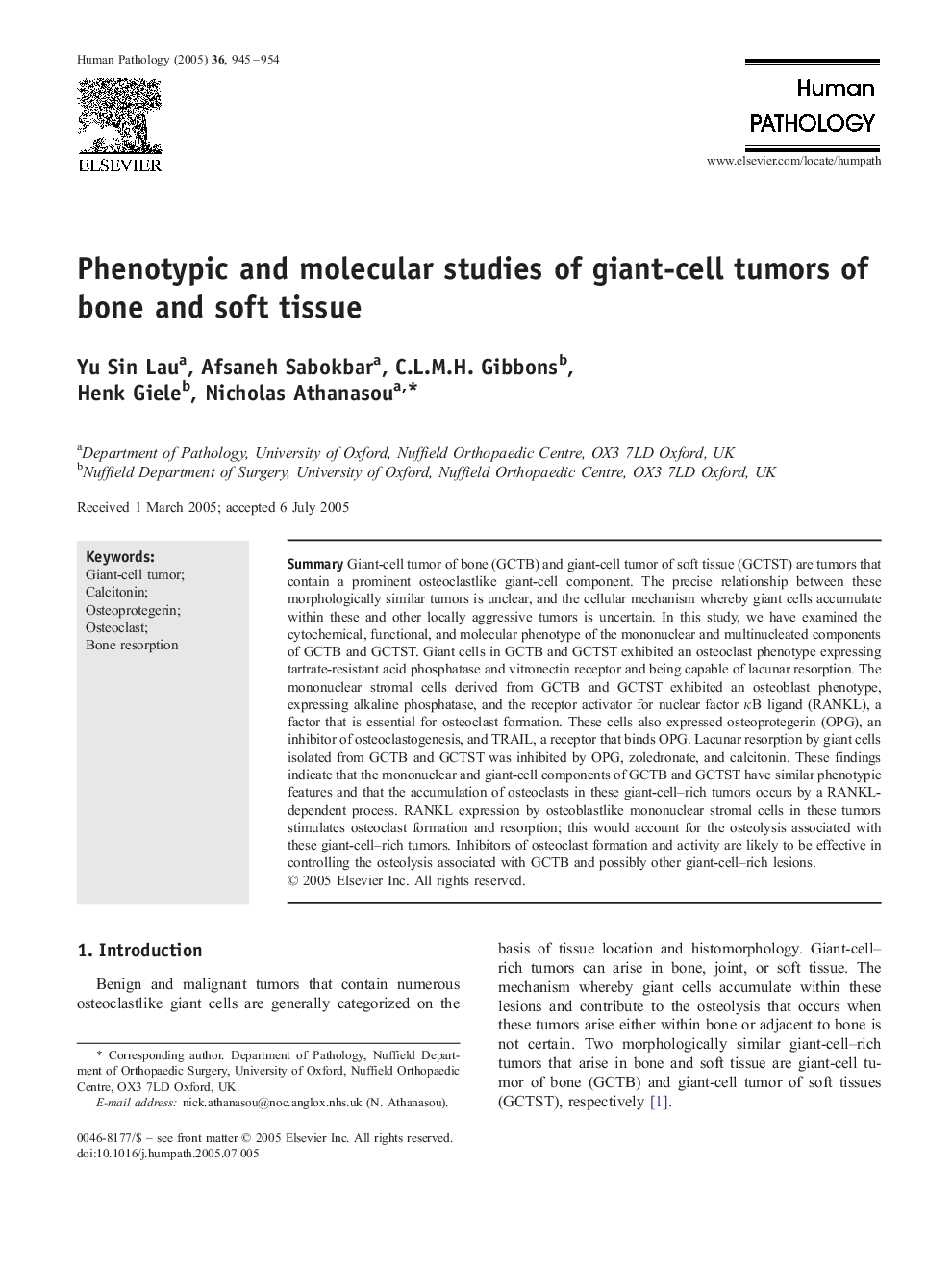| Article ID | Journal | Published Year | Pages | File Type |
|---|---|---|---|---|
| 9365274 | Human Pathology | 2005 | 10 Pages |
Abstract
Giant-cell tumor of bone (GCTB) and giant-cell tumor of soft tissue (GCTST) are tumors that contain a prominent osteoclastlike giant-cell component. The precise relationship between these morphologically similar tumors is unclear, and the cellular mechanism whereby giant cells accumulate within these and other locally aggressive tumors is uncertain. In this study, we have examined the cytochemical, functional, and molecular phenotype of the mononuclear and multinucleated components of GCTB and GCTST. Giant cells in GCTB and GCTST exhibited an osteoclast phenotype expressing tartrate-resistant acid phosphatase and vitronectin receptor and being capable of lacunar resorption. The mononuclear stromal cells derived from GCTB and GCTST exhibited an osteoblast phenotype, expressing alkaline phosphatase, and the receptor activator for nuclear factor κB ligand (RANKL), a factor that is essential for osteoclast formation. These cells also expressed osteoprotegerin (OPG), an inhibitor of osteoclastogenesis, and TRAIL, a receptor that binds OPG. Lacunar resorption by giant cells isolated from GCTB and GCTST was inhibited by OPG, zoledronate, and calcitonin. These findings indicate that the mononuclear and giant-cell components of GCTB and GCTST have similar phenotypic features and that the accumulation of osteoclasts in these giant-cell-rich tumors occurs by a RANKL-dependent process. RANKL expression by osteoblastlike mononuclear stromal cells in these tumors stimulates osteoclast formation and resorption; this would account for the osteolysis associated with these giant-cell-rich tumors. Inhibitors of osteoclast formation and activity are likely to be effective in controlling the osteolysis associated with GCTB and possibly other giant-cell-rich lesions.
Related Topics
Health Sciences
Medicine and Dentistry
Pathology and Medical Technology
Authors
Yu Sin Lau, Afsaneh Sabokbar, C.L.M.H. Gibbons, Henk Giele, Nicholas Athanasou,
